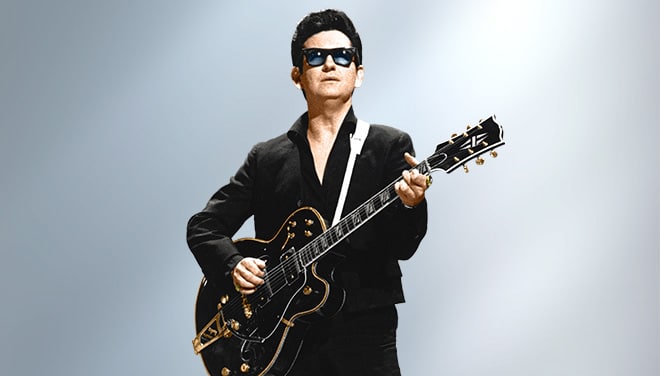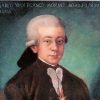Roy Orbison: A Legend in Rock and Roll History

Roy Orbison was an American singer-songwriter who rose to fame in the early 1960s. He was known for his powerful voice, dramatic ballads, and unique style. Over the course of his career, Orbison had numerous hits, including "Only the Lonely," "Crying," "Running Scared," and "Oh, Pretty Woman." His music has continued to captivate audiences around the world, even after his death in 1988.
Early Life and Career
Roy Orbison was born on April 23, 1936, in Vernon, Texas. His family moved to Wink, Texas when he was a child. Orbison's father was a worker at an oil refinery, while his mother was a nurse. From a young age, Orbison showed an interest in music, and his parents encouraged him to pursue his passion.
Orbison formed his first band, The Wink Westerners, while still in high school. The band played local gigs and made some recordings, but they never achieved much success. After graduating from high school in 1954, Orbison enrolled at North Texas State College to study geology. However, his love for music soon took over, and he dropped out of college to pursue his dream.
See Also: Exploring the best of Sting: A musical journey through hits
Exploring the best of Sting: A musical journey through hitsIn 1955, Orbison moved to Memphis, Tennessee, where he began recording demos and trying to land a record deal. He caught the attention of Sam Phillips, the founder of Sun Records, who offered him a contract. Orbison recorded several singles for Sun Records, but none of them sold well.

Rise to Fame
In 1958, Orbison signed with Monument Records, where he began producing his most successful work. His first hit for the label was "Uptown," which reached number 72 on the Billboard Hot 100 chart. However, it was his next single, "Only the Lonely," released in 1960, that launched him to stardom. The song reached number two on the Billboard Hot 100 and established Orbison as a major artist.
Orbison's early hits were notable for their dramatic balladry and emotional intensity. His voice had a remarkable range, allowing him to hit high notes with ease. He often sang about heartbreak and lost love, and his songs resonated with audiences around the world. In addition to "Only the Lonely," some of his other early hits included "Crying," "Running Scared," and "In Dreams."
See Also: Essential tracks: the best of Bruce Springsteen
Essential tracks: the best of Bruce Springsteen
During this period, Orbison became known for his signature look, which included dark sunglasses and a black suit. The sunglasses were not just a fashion statement – they were actually prescription lenses that helped correct his severe nearsightedness. Nevertheless, they became an iconic part of his image and added to his mystique.
Later Career and Comeback
In the mid-1960s, Orbison's career began to decline. The British Invasion had swept through the music industry, and many of the acts that had once been popular in the United States were no longer in vogue. Orbison struggled to find success, and his records stopped selling.
However, Orbison experienced a resurgence in the late 1980s. He joined the supergroup The Traveling Wilburys, alongside Bob Dylan, George Harrison, Tom Petty, and Jeff Lynne. The group released two albums, both of which were commercially successful. Orbison also released a solo album, "Mystery Girl," in 1989, which produced the hit single "You Got It." Sadly, Orbison died of a heart attack later that same year, at the age of 52, answering the often-asked question of "when did Roy Orbison die" and "what year did Roy Orbison die" with a specific moment in time that marked the end of an era for music.
See Also: The Life and Legacy of Mozart: The Music of a Genius
The Life and Legacy of Mozart: The Music of a Genius
Legacy and Impact
Roy Orbison's legacy in the music industry is enduring. His unique voice and powerful ballads continue to captivate audiences around the world, decades after they were first released. He has been cited as an influence by countless musicians, including Bruce Springsteen, Elvis Costello, and k.d. lang.
In 1987, Orbison was inducted into the Rock and Roll Hall of Fame, cementing his status as a legend in the genre and highlighting the importance of his contribution with the keyword "roy orbison rock and roll hall of fame." In 2010, Rolling Stone magazine ranked him number 37 on its list of the "100 Greatest Singers of All Time."
Orbison's music has also had an impact on popular culture beyond the music industry. His songs have been featured in movies, television shows, and commercials. "Oh, Pretty Woman" was famously used in the film "Pretty Woman," starring Julia Roberts and Richard Gere.
See Also: The Rise of K-Pop in 2024: Trends and New Artists
The Rise of K-Pop in 2024: Trends and New Artists
Conclusion
Roy Orbison was a true icon of rock and roll. His unique style and powerful voice helped define the genre, and his music continues to inspire and delight audiences around the world. While he may be gone, his legacy lives on through his timeless recordings, which will continue to be enjoyed for generations to come.
FAQs
- What is Roy Orbison's most famous song?
Roy Orbison's most famous song is "Oh, Pretty Woman." Released in 1964, the song reached number one on the Billboard Hot 100 chart and went on to become a classic of the rock and roll genre.
- Did Roy Orbison write his own songs?
Yes, Roy Orbison wrote many of his own songs, including some of his biggest hits, such as "Crying" and "In Dreams." He also collaborated with other songwriters throughout his career.
See Also: Top 10 Best Folk Songs of the 80s
Top 10 Best Folk Songs of the 80s- What was Roy Orbison's vocal range?
Roy Orbison had an impressive vocal range that allowed him to hit high notes with ease. His vocal range has been estimated to be more than three octaves.
- Did Roy Orbison have any children?
Roy Orbison had three children: Wesley, Roy Jr., and Alex.
- How did Roy Orbison die?
Roy Orbison died of a heart attack on December 6, 1988, at the age of 52.

Overall, Roy Orbison's impact on the music industry and popular culture cannot be overstated. His music continues to be celebrated and loved by fans around the world, and his legacy as a true icon of rock and roll will endure for generations to come.
If you want to know other articles similar to Roy Orbison: A Legend in Rock and Roll History you can visit the category Rock.
